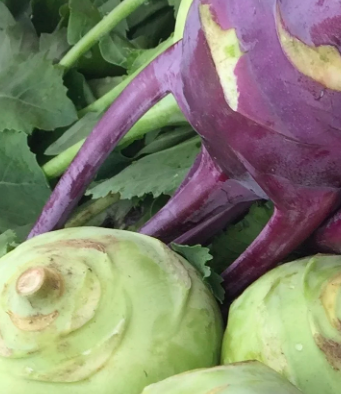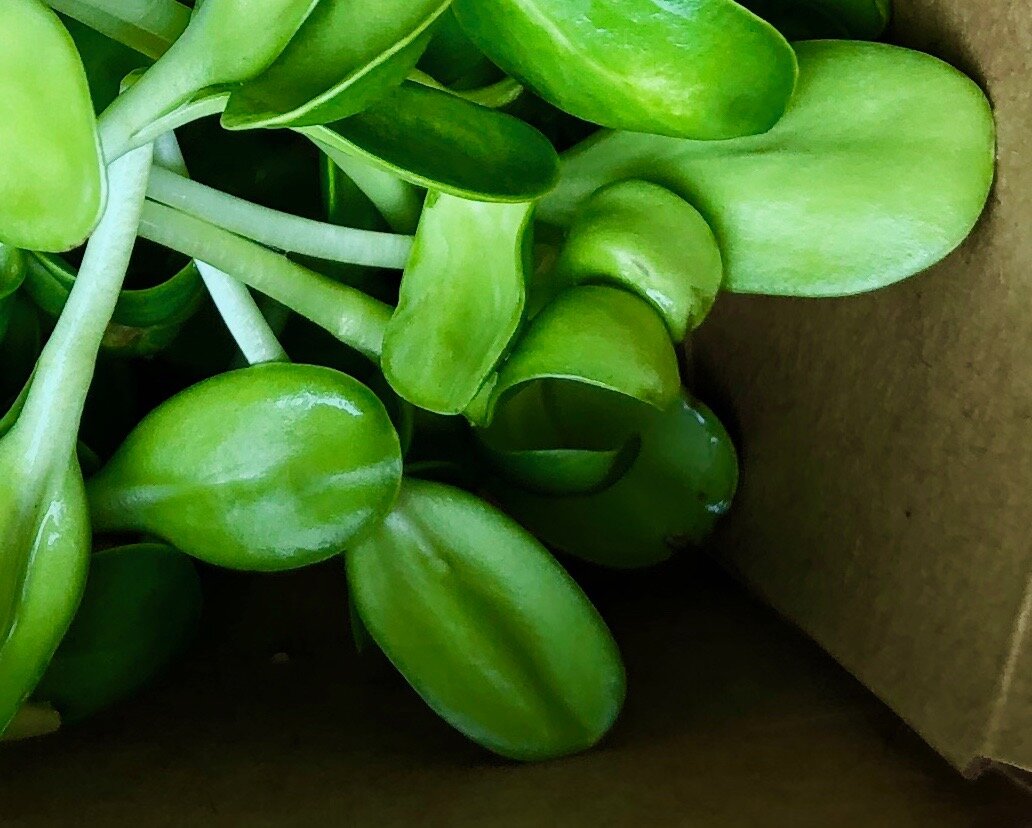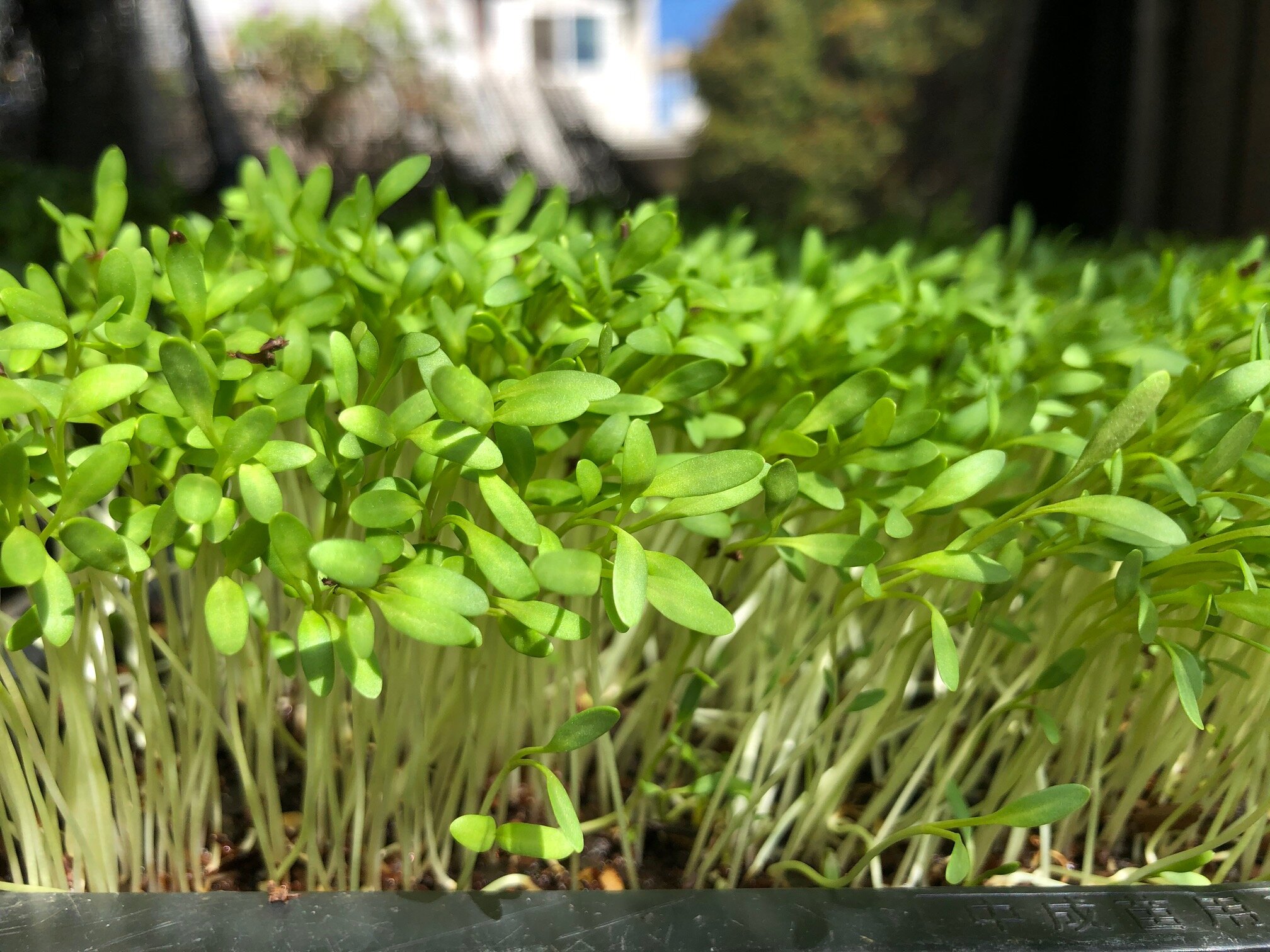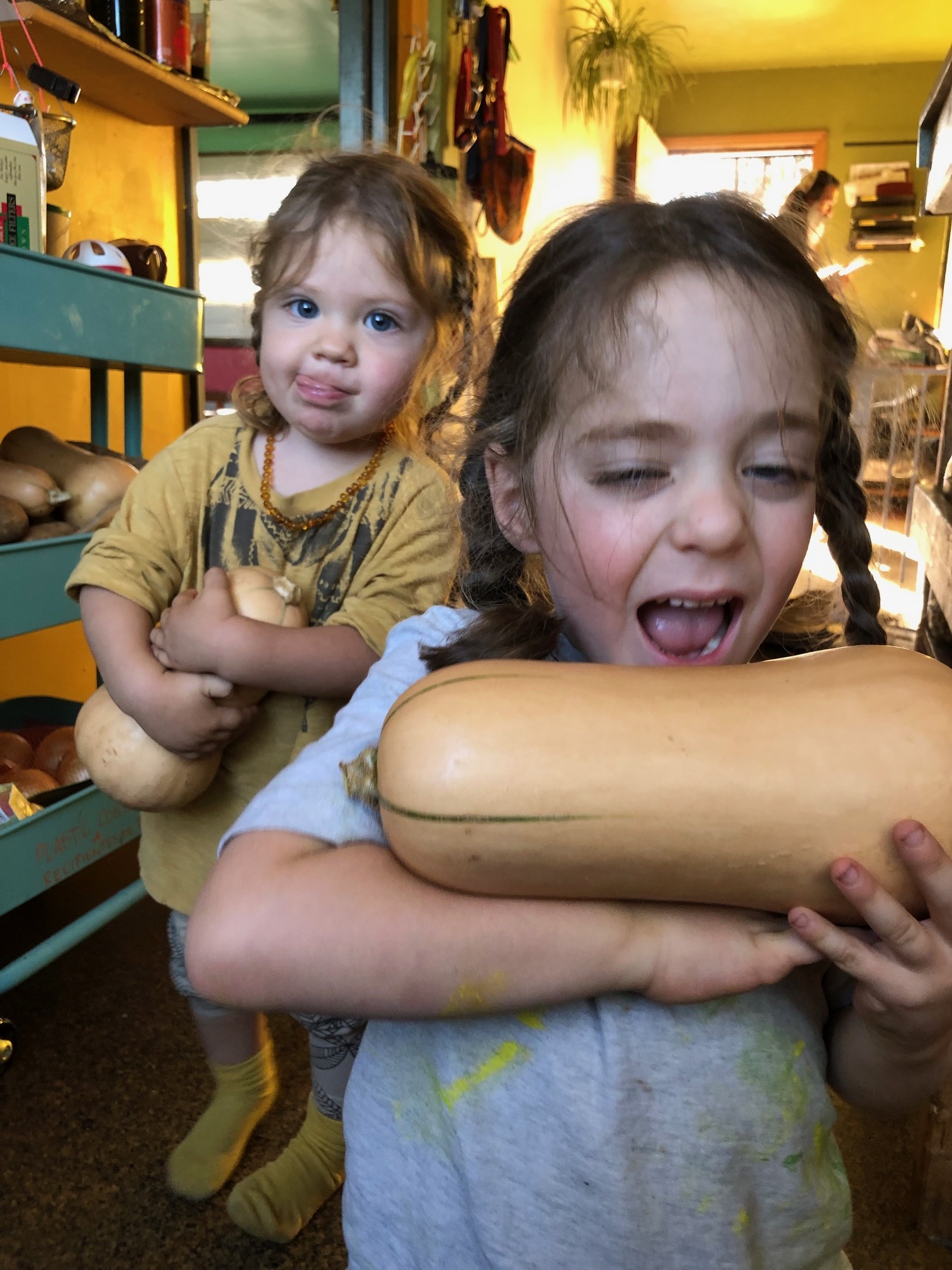Here’s some more ideas for just what to do with kohlrabi (including how to cook the greens)!
It’s taken me years to make friends with this funky vegetable. It’s soooo good for you, though. Before this recipe (which finally makes eating raw kohlrabi exciting for me!), I could easily chop the greens into my throw-everything-together stew and all I could think of to do with the bulb was slice and roast it with olive oil, salt and pepper (which is pretty tasty, by the way). But this! I hear raw olive oil is way better for you than cooking with it. And I can finally enjoy the raw crunchiness of the kohlrabi in all its healthy glory. I hope you do, too!
Ingredients:
1 Kohlrabi
1 Apple
1/2 lemon or lime
Olive Oil
Trader Joe’s Dukkah Nut and Spice Blend (Almonds, Sesame Seeds, Fennel Seeds, Coriander, Anise Seeds, Salt)
Microgreens (we’re trying a Kale and lemony Sorrel mix this week, but any mild mix would work!)
Instructions:
1. Use a knife to remove the thick peel, then thinly slice the kohlrabi bulb. Think half-moon shapes.
2. Thinly slice apple. Half-moon again.
3. Toss kohlrabi and apple together with a squeeze of lemon or lime, drizzle with olive oil and generously sprinkle with Dukkah nut and spice blend.
4. Top with microgreens.











